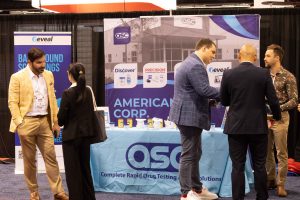How long do hair drug tests take to process?


In a world where drug testing has become increasingly prevalent, understanding the nuances of different testing methods is crucial. Among these methods, hair drug tests stand out as a reliable and effective means of detecting substance abuse over an extended period. One key factor that individuals and employers often inquire about is the turnaround time for hair drug tests. Delving into the intricacies of this process sheds light on the duration one can expect for obtaining conclusive results.
Before delving into the turnaround time, it’s essential to recognize why hair drug tests are chosen in the first place. Unlike urine or blood tests, which have shorter detection windows, hair follicle testing can reveal a person’s drug use history for an extended period—typically up to 90 days. This makes it a preferred method for employers seeking a comprehensive overview of an individual’s substance use patterns.
The Testing Process: A Brief Overview
Understanding the turnaround time for hair drug tests begins with an awareness of the testing process itself. During a hair drug test, a small sample of hair is collected from the individual. This is usually done from the back of the head, near the scalp, to ensure recent drug use can be detected. The sample is then sent to a laboratory for analysis.
At the laboratory, the hair sample undergoes a series of intricate processes. The first step involves washing the hair to remove external contaminants like dust or environmental pollutants. Following this, the actual drug testing process takes place, often utilizing techniques like enzyme-linked immunosorbent assay (ELISA) or mass spectrometry.
Processing Time at the Laboratory: Factors at Play
Several factors influence the processing time for hair drug tests. One significant determinant is the laboratory’s efficiency and workload. Larger laboratories processing a high volume of tests may experience longer turnaround times compared to smaller facilities with fewer samples to analyze.
Moreover, the complexity of the analysis plays a role. Laboratories may need additional time to ensure accurate and reliable results, especially when dealing with a diverse range of substances. Some drugs may also require more intricate testing procedures, contributing to an extended processing period.
Standard Turnaround Time: What to Expect?
On average, the standard turnaround time for hair drug test results is approximately 1 to 3 days. This duration encompasses the time it takes for the sample to reach the laboratory, undergo processing, and for the results to be released. It’s important to note that this is a general estimate, and actual timelines may vary based on the factors mentioned earlier.
Some laboratories offer expedited services for individuals or organizations requiring faster results. Expedited testing, often at an additional cost, can reduce the turnaround time to as little as 24 hours. However, it’s crucial to balance the need for speed with the necessity of accurate and thorough analysis.
Legal and Ethical Considerations: Patience Pays Off
In situations where individuals undergo hair drug testing for legal or employment-related reasons, patience becomes a virtue. Legal and ethical considerations dictate that laboratories adhere to stringent quality control measures to ensure the reliability of results. Rushing through the analysis process may compromise accuracy, leading to potential legal ramifications.
Employers and individuals alike should recognize that the slightly prolonged turnaround time for hair drug tests is a trade-off for the comprehensive and retrospective information these tests provide. It’s a small investment of time that yields a thorough understanding of an individual’s substance use history.
External Factors Impacting Turnaround Time
While the internal processes of the laboratory primarily dictate the turnaround time, external factors can also come into play. Shipping and logistics play a crucial role in ensuring that the hair sample reaches the laboratory promptly. Delays in transit can add to the overall processing time, emphasizing the importance of a reliable transportation network.
Additionally, complications such as inconclusive results or the need for retesting may contribute to extended turnaround times. Laboratories prioritize accuracy, and in cases where results are ambiguous, further analysis may be required to provide definitive answers.
In the realm of drug testing, understanding the turnaround time for hair drug tests is vital for both individuals and organizations. While the average processing time is relatively short, it’s essential to balance the need for speed with the requirement for precise and accurate results. Recognizing the factors influencing the turnaround time allows for a more informed approach, ensuring that the insights gained from hair drug tests are both timely and trustworthy. As drug testing continues to be a cornerstone of various industries, this knowledge becomes increasingly valuable in navigating the intersection of efficiency and reliability.
